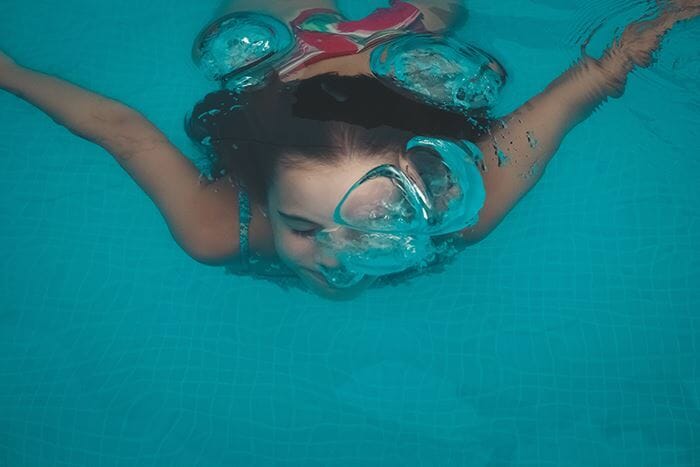How to Teach Your Child to Swim

Many adults afraid of water had terrible experiences as children and never learned to swim. No one should be afraid to swim, so it’s important to acclimate your child to the water at an early age. At what age do you start teaching your children to swim?
Contents
Infants (6 months)
Research continues to show that you can help teach even infants’ developmental skills to help them float in water. A child-parent swimming program is a good idea until your child is old enough to take formal lessons. The programs often focus on skills for swimming readiness, pool safety, and fun water games that help your child adapt to the water. A progressive swim program teaches children aquatic skills that will last their whole life.
As an infant, the primary goal is to introduce them to water. Show them how to splash and play gentle water games. Bobbing in the water while singing songs also helps them learn those developmental skills needed to swim and helps them positively associate the water.
Vital Safety Recommendations
- It’s important not to submerge any children under 3 years of age. Kids this young may swallow large amounts of water that can cause seizures, nausea, and sleepiness. This condition is called water intoxication and can even be fatal, though this is rare.
- Always keep your child in your arms while they are in the water at this age.
- Remember that infants can drown in 30 seconds in just an inch of water. Being aware of water hazards is vital. This includes tubs, buckets, small pools, and toilets.
- Keeping rescue equipment on hand near a pool is essential. Equipment to keep handy is a ring buoy, a long pole for reaching, a portable phone, and a first-aid kit. Your pool needs at least four-foot fencing on all sides as well as a gate that self-latches and closes. It should be out of a child’s reach.
Toddlers
When children are two to four years old, they are coordinated enough to begin learning more complicated movements than infants. When teaching young children to swim, make sure you explain in detail what you’re getting ready to do. It’s helpful to use a countdown to prepare your child for the action. To make eye contact and build trust with your child you should avoid wearing sunglasses.
Playing fun games that make children move their arms and kick their legs help get them ready to learn actual swimming skills. Show them how to float on their back or stomach while you support them. Playing with them on the steps helps them explore the step area and accustoms them to the water.
Show Them How to Blow Bubbles in the Water
Showing your child how to make bubbles helps them get ready to put their head underwater. Take a deep breath and illustrate how to blow bubbles in the water. Next, ask them if they can do it. Your child may need encouragement, but it is critical that you’re patient. Putting their face in water frightens some children.
Picking up Toys
Using a toy, preferably one that sinks, place a toy on the steps and help your child pick it up. Picking up a toy from under the water helps children begin to put their face underwater. It’s about getting your child to retrieve the toy that’s submerged.
How to Get Back to the Steps by Holding the Wall
The goal of this activity is to teach your child how to get to a safe place if they accidentally fall into the pool. Teach them how to hold onto the wall further away from the steps and placing your hands over theirs, illustrate how to crawl back to the steps hand over hand. It makes it a game if you call it something like the “crab crawl.” Children can have crab races to see who can get back to the steps first.
Children 4-5 Years Old
At this age, children have developed the coordination to learn how to swim on their own. Now is the time to enroll them in formal lessons. They should be able to float on their own and submerge their heads underwater for several seconds. Children this age can also utilize coordinated arm and kicking movements. Patience is important. Don’t force your child to do an activity that they aren’t comfortable with.
Children 6 Years and Older
Older children can hold their breath for extended periods of time, pick up things from the bottom of the pool, and swim underwater. This is the time for them to learn swim strokes such as the back and breaststroke. You still need to supervise them in the pool, but you don’t need to stay in the water with them. However, never overestimate their swimming abilities.
Swimming is such a fun activity for children and encouraging them to learn to swim is important. Teach and enforce safety rules like no horseplay. Learning these skills helps build your child’s confidence in the water and provides valuable safety skills.
